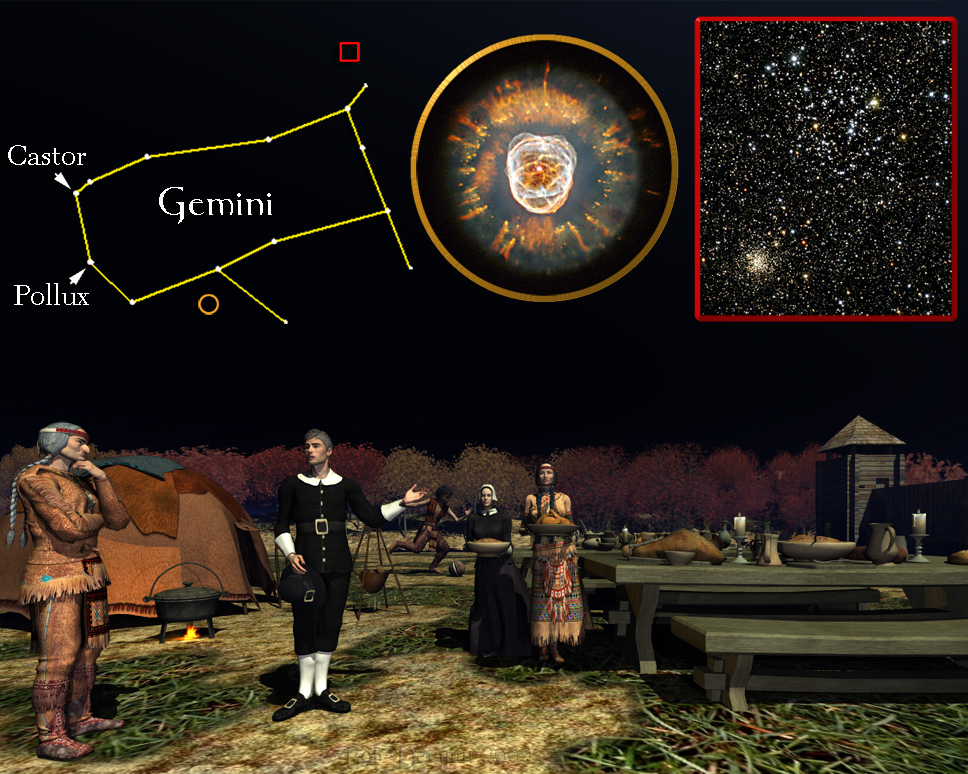
For the week including November 20, 2009

THE TWINS
The constellation of Gemini, the Twins, is close to the eastern horizon around midevening. Gemini is easy to find because two prominent stars that are nearly the same brightness mark it. This star group has been known for thousands of years and the Twin stars, Castor and Pollux, are named for brothers found in old Greek myths. The brightness of the Twins has puzzled astronomers for years. Although ancient accounts state that the Twins are identical, even a quick look today reveals that Castor isn’t quite as bright as Pollux. It wasn’t until telescopes were invented in the early 1600s that astronomers had a chance to find an answer.
Back in 1678, the astronomer G. D. Cassini turned his new telescope toward Castor and found that it was shaped like a figure-8. Later observations revealed that Castor was actually a pair of stars orbiting a common center of gravity (If you own a small telescope you can see this for yourself.). This was the first sighting of a binary star system, and we now know that most stars in our galaxy form in groups this way. There were more surprises to come though. It has since been found that both of the main stars of Castor have another star orbiting around them -- and as these four stars twirl around each other, a third pair of stars orbits around them as well! The inherent instability in this multiple binary system may account for Castor’s mysterious dimming over the years.
While you’re looking at Castor, you may see a blur of light out of the corner of your eye. This is the immense star cloud called M35, shown in the National Optical Astronomy Observatory (NOAO/AURA/NSF) photograph at upper right in our illustration. A set of binoculars will reveal a spectacular group of hundreds of stars scattered over thirty light-years of space. If you have access to a telescope, look in the southwest corner of M35 and you’ll find another star cloud hidden away. This cluster is NGC 2158 (visible in the lower left corner), and though it looks like it’s a part of M35, it’s actually sitting all the way out at the edge of our galaxy. Actually, it’s only because of a chance alignment of empty space between us and it that we can see NGC 2158 at all. Such lengthy alignments of vacant space are fairly rare. Our fortunate view of NGC 2158 is like pointing a telescope out a kitchen window in Connecticut and glimpsing the Golden Gate Bridge in California.
Since you’ve already got your telescope out, look for the Eskimo Nebula, just under the center of the constellation. The photograph at our illustration’s upper center, taken with the Hubble Space Telescope, shows the Eskimo to be a bright dwarf star that has sloughed off its outer layers. This process forms a planetary nebula, and marks the late stages of a star’s life. The Eskimo derived its name from the fringe-like clouds surrounding the central star. It reminded astronomers of a furry hood encircling a human face.
Unless otherwise indicated, all content of this web site is the copyright of Robert Deegan and all rights are reserved.
For more information, or to comment, please contact: Bob@NightSkies.org